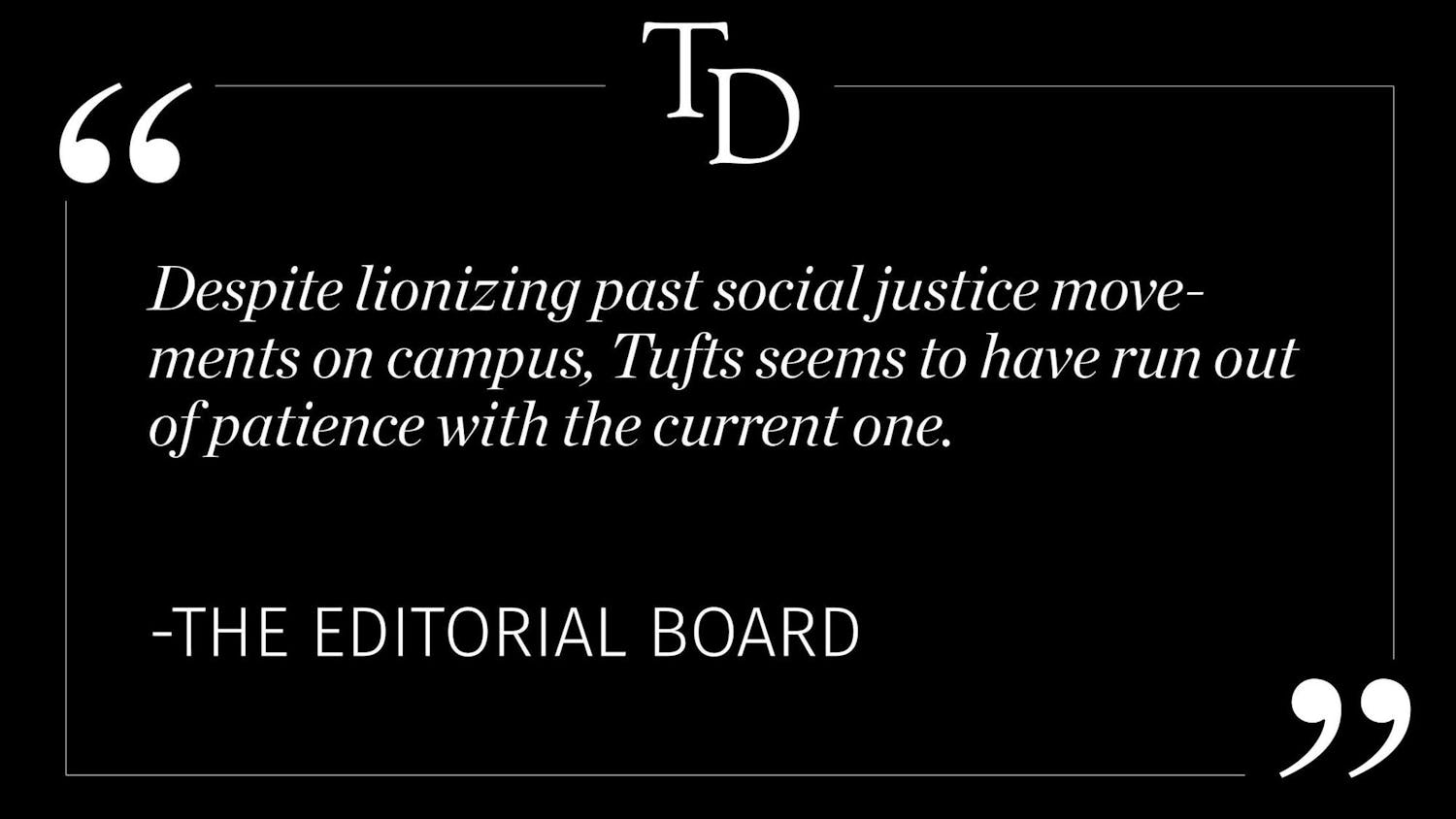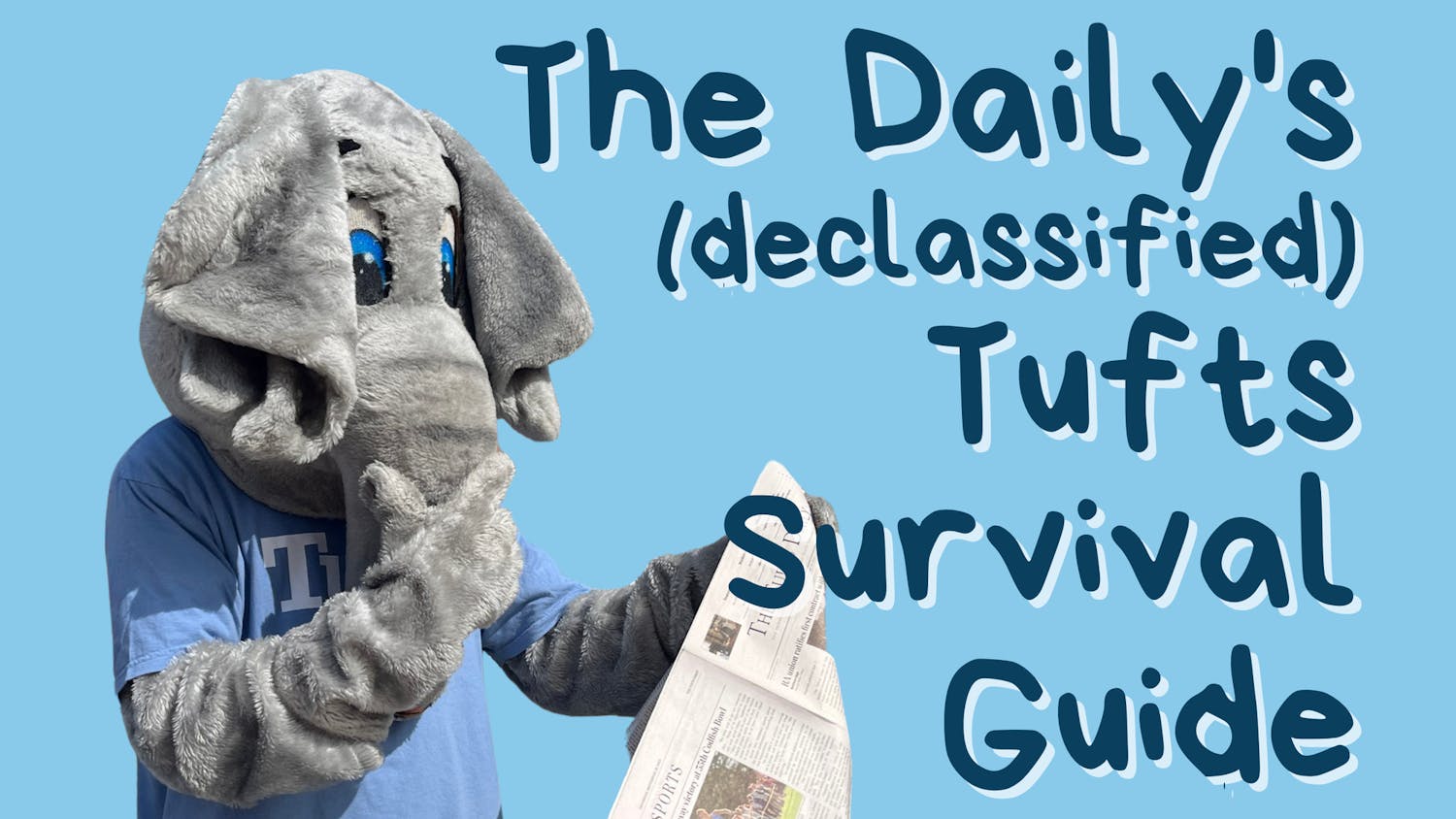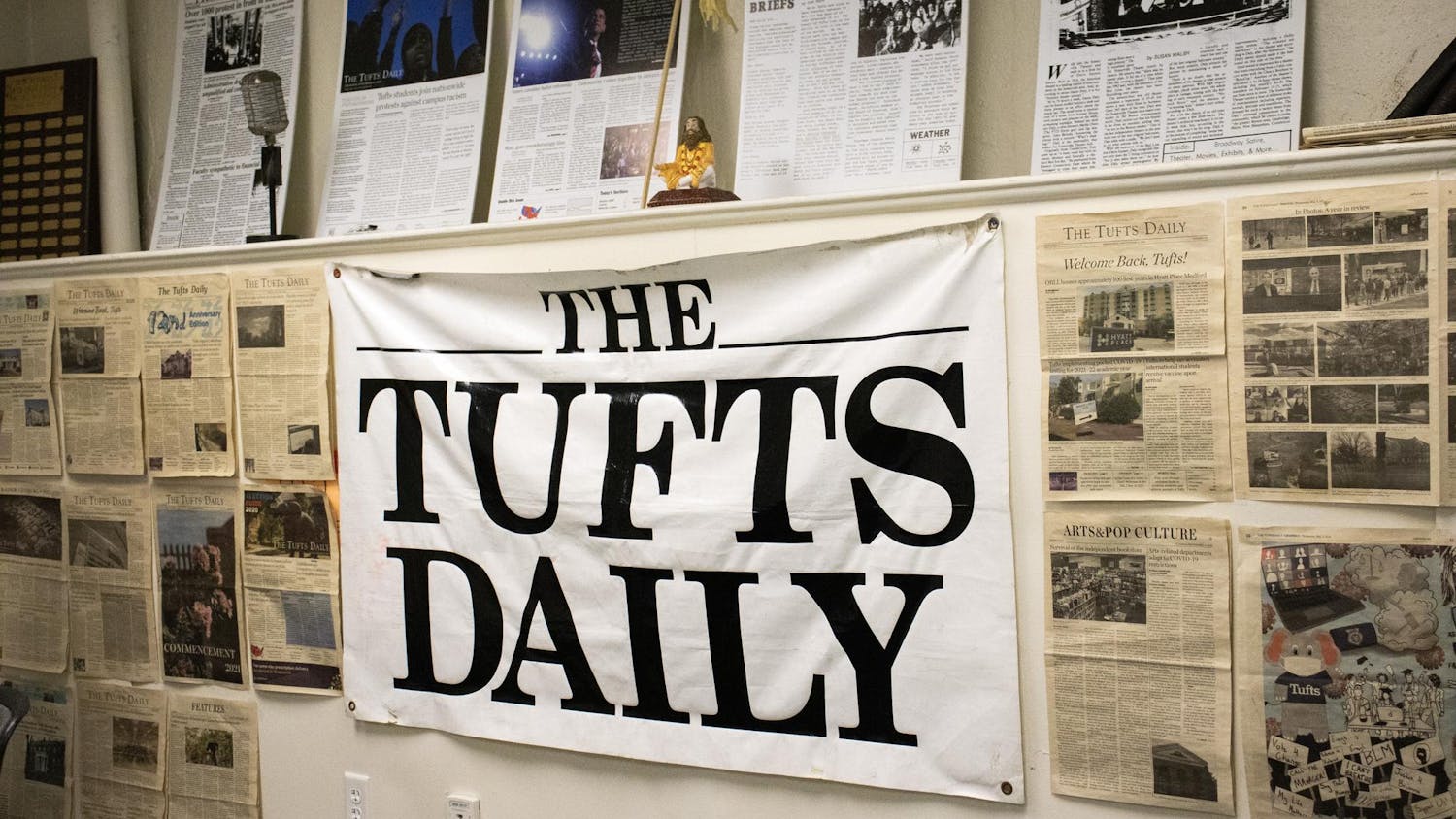Content warning: This article mentions violence and racism against Asian individuals.
I am writing to demand a statement from the Tufts University administration condemning the latest wave of anti-Asian racism and violent attacks. For a community that often feels silenced, erased and rendered invisible, I demand that the university visibly and meaningfully support Asian students, educators and staff during these traumatic times.
For those who are not active on social media or are not a part of the Asian community, you may be unaware of the latest wave of anti-Asian racism and violent attacks against members of our community.
The following incidents have occurred in just the past several weeks:
- On Jan. 28, Vicha Ratanapakdee, an 84-year-old Thai man, was forcibly shoved while walking down the street. He died two days later.
- Another video showed a 91-year-old man senselessly pushed onto the cement sidewalk in Oakland’s Chinatown.
- A 64-year-old grandmother of Vietnamese descent was assaulted and her purse was stolen in broad daylight as she exited a bank with cash for Lunar New Year celebrations.
- An elderly Chinese couple in their 80s was attacked while crossing the street. The wife later died from her injuries.
- The Pennsylvania State Police fatally shot Christian Hall, a 19-year-old experiencing a mental health crisis. His hands were up when they killed him.
- A historic granite monument honoring Japanese immigrants was vandalized in San Jose’s Japantown.
- During the last week of January, nine Asian-owned businesses had their windows smashed.
- Noel Quintana, a 61-year-old Filipino man, was slashed across his face with a box cutter after asking a man to stop kicking his bag on the New York subway. No passengers came to his aid.
- On Lunar New Year, several Asian-American-owned businesses in Howard County, Md. were vandalized and stolen from.
- And many, many more. Too many more.
Since the pandemic started, hate crime motivated by anti-Asian sentiment has increased exponentially — 1900% in New York City compared to the previous year, according to New York Police Department data.
Between March 19, 2020 and Dec. 31, 2020,over 2,800 firsthand accounts of anti-Asian hate were received by Stop AAPI Hate, a “coalition documenting and addressing anti-Asian hate and discrimination amid the COVID-19 pandemic.”
Perhaps even more shocking, only 47.6% of Asian hate crime victimization is reported in the United States, according to the Bureau of Justice Statistics' National Crime Victimization Survey, illustrating the vast underreporting of anti-Asian hate crime.
For a school that prides itself on civic engagement, Tufts University needs to be more aware of the instances of racism happening around the country and actively support the members of those communities on and off campus.
Helping me reflect on the importance of institutional solidarity, Gillian Davis (LA’19) wrote, “I feel like our alma maters are institutions we look to in times of turmoil for guidance, no matter how long it’s been since we’ve graduated. So we look to Tufts to validate our feelings of frustration, fear and exhaustion, only to be met with silence. And when the institution is silent, it in a sense acknowledges and validates the institutional racism.” For both current students and alumni, we deserve better and have the right to expect better from prominent institutions of higher education.
Since I graduated in December 2019, I feel less connected to the Tufts community. I asked a few students who are still enrolled about how they are feeling, and how I, and the university, could best support them. Melody Khounchanh, a junior, responded, “I’m not sure if I feel supported or not. It’s kind of the same feeling that always happens when something occurs in the Asian community. We get pushed back into the submissive category and there isn’t the same passion to fight for our community compared to other groups.”
For so long, many members of the Asian diaspora have suppressed our own racial trauma. We were falsely led to believe that if we stayed silent and worked hard, we would achieve the Western definition of success. Waking up from this illusion is emotional, confusing and painful.
Additionally, I want you to understand that anti-Asian racism occurred long before the COVID-19 pandemic. In 1882, the Chinese Exclusion Act was signed into law. It was the first ethnic-based discriminatory immigration law in U.S. history, preventing all members of a national group from entering the “Land of Opportunity.” Of course, this was after Asian immigrants completed building the first Transcontinental Railroad in the 1860s, which is a fact often missing in U.S. history curricula and textbooks.
The United States has a long history of scapegoating immigrants for diseases and outbreaks, and Asians were no exception. Around the 1900s, the racist metaphor “Yellow Peril,” also known as “Yellow Terror” and “Yellow Specter,” spread faster than the diseases that were blamed on these East Asian communities. Politicians and the medical community wrongly stereotyped East Asian immigrants as more likely to carry diseases such as smallpox and cholera. The 1900 bubonic plague outbreak in San Francisco was used as an excuse to quarantine East Asians; the Surgeon General Walter Wyman even called it the“Oriental disease, peculiar to rice eaters.”
And let’s not forget Executive Order 9066 of 1942, when President Franklin D. Roosevelt forced the relocation and incarceration of about 120,000 people of Japanese descent purely based on racist suspicion!
From the Chinese Exclusion Act of the late 1800s, to the “Yellow Peril” of the 1900s, to the Japanese internment camps of World War II,racial hatred and systemic oppression against Asians has saturated American history. The current pandemic is only used as an excuse by some to visibly manifest their racist ideologies, emboldened by the xenophobic rhetoric of the 45th president and various Republican politicians. The widespread use of phrases such as “China Virus,” “Wuhan Virus” and “Kung Flu” on mainstream media and social media only reinforces the hatred, racism and xenophobia deeply embedded in this country.
Ameya Okamoto, a sophomore, shared this reflection on her feelings of isolation. “Even with the increased violence, I still hear and feel the sentiment that it's not our time — and won't ever be our time — to talk about our experiences. Asians are constantly invalidated and gaslighted about our experiences with difference and racism. It's terrifying to talk about my own experiences with violence and racism because there is a fear that my story is not important or is taking away attention from other important platforms.”
Invisibility is so entrenched in our experience as Asians in America. Even during this moment of collective mourning, we still feel the need to promote other communities ahead of our own. The model minority myth convinced us that we should not take up space because we do not have it “that bad.” For some of us, the myth is so internalized, we prioritize the pain of others over our own, silently grieving for our own community in private. We bury our pain so we can do more, be more, for others. We have been gaslighted for so long that we’ve started to gaslight ourselves. “Who taught Asian Americans that we shouldn't prioritize or take care of ourselves? Look out for our own communities? Embrace our culture and elderly?" Okamoto asked.
I am pleading with the Tufts community to STOP letting Asian communities carry the traumatic burden alone. Our pain, trauma and exhaustion must be acknowledged and addressed. The lack of support is disheartening and invalidating. These recent attacks, many against the elderly, are not isolated incidents; they are a manifestation and continuation of historic white supremacy against our communities.
I request that the University Chaplaincy reach out to the communities of the faiths, cultures and spiritualities affected by the violence. I urge Tufts Counseling and Mental Health Services to share resources and support Asian students as they struggle with identifying what they need. I ask the Division of Student Diversity and Inclusion to provide a healing space for cross-racial community solidarity. And I invite faculty, staff and educators to listen and amplify our voices to their vast network.
To the general Tufts community, check in with your Asian students and friends beyond the typical “How are you doing?” Holistically ask how they are doing physically, mentally, emotionally and spiritually. Make sure they are eating, sleeping and taking care of themselves. Ask what support they need and what it looks like for them. Provide silly, wholesome distractions if that is what they need. Make space and just listen. Solidarity starts with community care.
Beyond just a statement — which, at best, is a starting point, and at worst, performative — I ask the university and the Tufts community to learn our histories, to educate yourselves on our diverse cultures and promote Asian restaurants, artists and stories.
Silence erases our humanity. Silence guarantees more violence in the future. Share our voices.
I wish I was not the one writing. However, the way I felt I could contribute to my community was to amplify our pain, our rage, our grief, our joy and our voices.
We were never invisible, we were made invisible: our histories erased, our facesreplaced, our voices silenced.
Enough is enough.
Author's Note: My usage of the word “Asian” is a shorthand that encompasses the vast and diverse Asian diaspora, including, but not limited to, Southeast Asians, Pacific Islanders, Southwest Asians and East Asians. It is important to remember that “Asians” are not a monolith, and that the term often refers to some identities more than others.
Sean Lee is a multimedia environmental storyteller and alumnus (LA'19) of Tufts University. He studied environmental studies and an interdisciplinary studies major he designed called “Conservation Through Multimedia Storytelling.” He can be reached at seanlee.earth@gmail.com.





